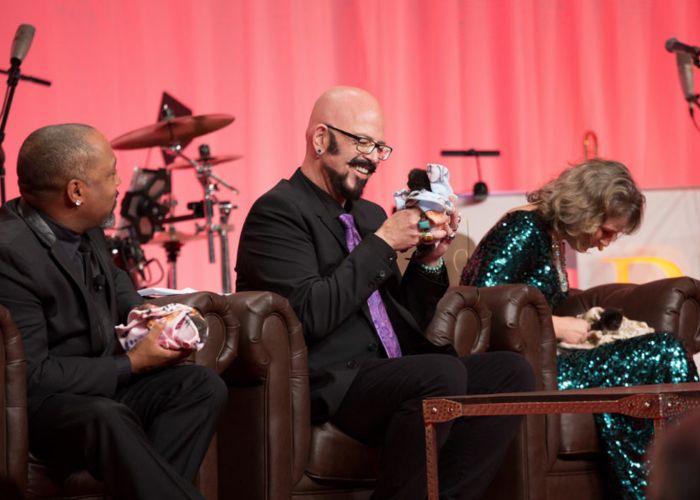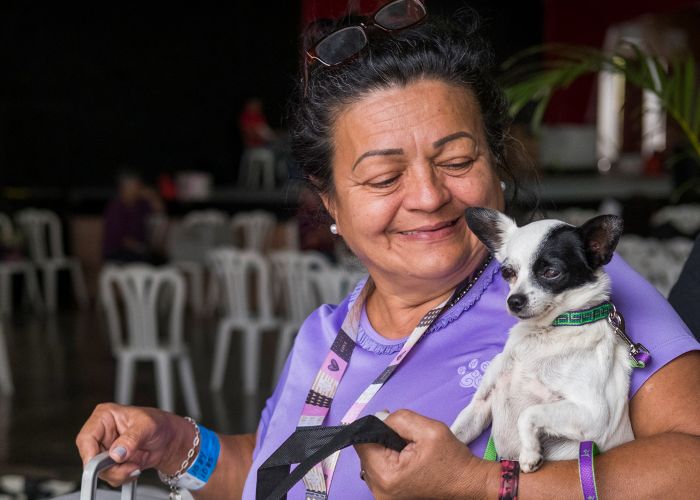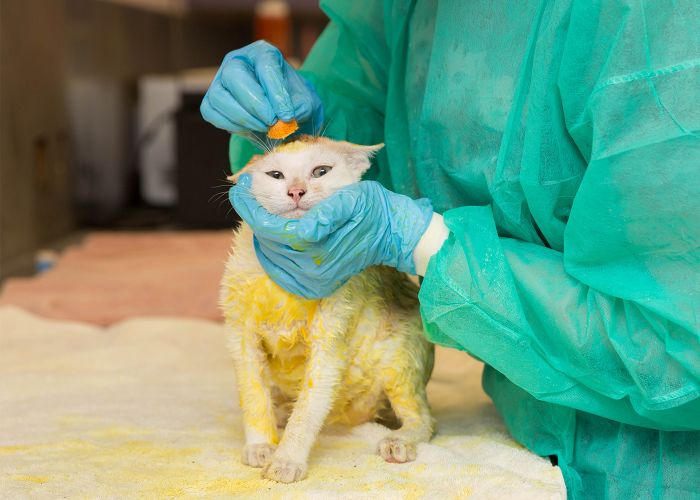Face(book) value
How you can learn to stop worrying and love your feed
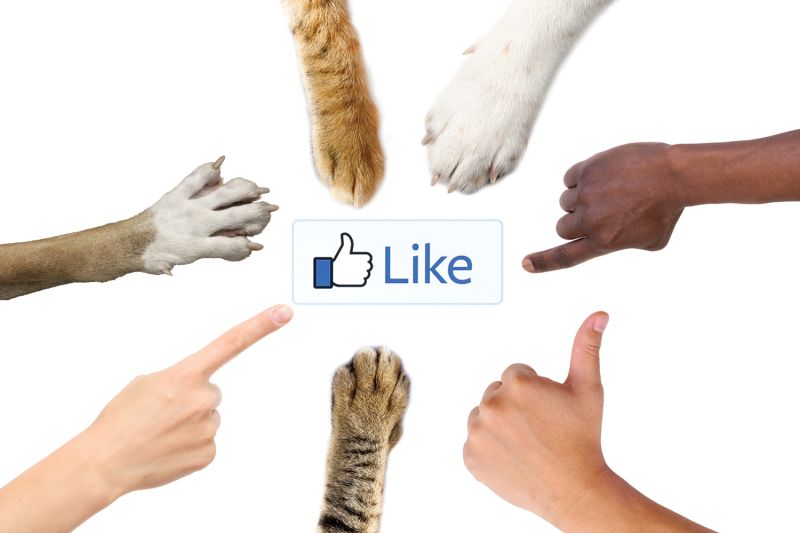
Facebook: You may love it, you may hate it. You may be a reluctant participant in the world’s most popular social media platform. Day after day, you slog through your feed, trying to ignore your brother-in-law’s political screeds and the intimate details of your co-worker’s midlife crisis. You do this because somewhere in this cacophony of friends and acquaintances whose lives intersect on your computer screen, there is news you care about.
In the animal rescue world, social media can also seem like a necessary evil. Even if you avoid Twitter, Tumblr and other online networking platforms, it’s hard to feel like a legitimate organization these days without a Facebook presence.
“More people look for a Facebook page than they do websites,” says Molly Feldman, HSUS social media manager. “It’s where people get news and get connected. There’s so much opportunity—more so with Facebook than any other social media platform—just to reach a lot of people.”
If your organization, like many rescue groups, lacks a shelter or other facility, Facebook could be the primary place where your community learns about your good work. It could also be where volunteers share information and rally around a common cause.
But there’s a dark side to social media, and you’ve likely encountered it. Maybe your organization’s page has become the scene of online shouting matches over the safety of retractable leashes, raw food diets or any of the countless other issues animal lovers can (passionately) disagree on. So you’ve disabled comments on your page, or you only post content that doesn’t encourage responses. Or maybe you’re afraid that a Facebook group will require endless hours of monitoring, and so you miss out on ways that an online forum could benefit your staff and volunteers.
If any of these apply to you, it’s time to rethink your use of the social media mainstay. Learn from some shelter and rescue group leaders how they have minimized the perils of Facebook while maximizing its ability to engage and attract volunteers, adopters and donors.
Divide and prosper
It might sound counter-intuitive, but expanding your organization’s use of Facebook can ultimately save you time in your lifesaving work.
Perhaps you need a forum for your foster caregivers to share tips and information. Or maybe you’re looking to facilitate better communication among staff and volunteers and finding that email groups don’t cut it. A Facebook group (which is separate from your organization’s main Facebook page) can be a powerful tool for doing all of this and deepening volunteers’ commitment to your cause.
For the Alberta Animal Rescue Crew Society (AARCS) in Canada, Facebook groups have streamlined communications and drastically reduced the need for “sending 27 emails” on every topic, says volunteer coordinator Rachel Howard. Instead of notifying Howard any time they need to cancel a shift, volunteers quickly find replacements by posting to the group page. Volunteers working early shifts at the nonprofit’s adoption center pass along advice to those on later shifts, like “try walking so-and-so first,” or note something that worked particularly well for a shift, Howard says.
The group page also serves as a handy document-sharing center, with volunteer guidelines, disinfection protocols and other key documents uploaded for easy access. Group administrators post tips to remind volunteers of processes and policy changes, while seasoned volunteers and foster caregivers help answer questions from newbies. With more than 1,000 shelter volunteers and nearly 700 active foster caregivers, this all translates into substantial time savings for AARCS staff, says Howard.
A Facebook group can also provide an emotional support network for volunteers, says Tara Pregnolato, volunteer program manager with the Peggy Adams Animal Rescue League in West Palm Beach, Florida. It’s a place where volunteers help one another work through issues of compassion fatigue and, for foster caregivers, the emotions of letting go. “We don’t want people to feel isolated, working in a vacuum,” Pregnolato says. “That’s not the way of the future.”

Rules of engagement
Whether you’re launching a public page or a private group for volunteers, you need to view Facebook as an interactive forum, a place where you can build relationships between your organization and the people who care about your work. But like any relationship, you need to establish some ground rules.
A typical commenting policy will prohibit profanity, anything that condones violence or illegal activities and personal attacks on other users. “Make it clear that you want to provide open discussion in a family-friendly, productive way,” says Feldman. Beyond those basics, you should clearly communicate the purpose of the forum and discourage unproductive conversations.
Commenting policies typically appear in the About section of your page profile and may evolve over time. You can start by checking out the commenting rules of similar organizations. For Lab Rescue LRCP (Labrador Retriever Club of the Potomac), a foster-based rescue in the greater Washington, D.C., region, the commenting policy prohibits posts by breeders selling dogs, recommendations for punishment-based training methods and cross-posts about dogs in need outside the rescue’s service area—the latter because “people want to be part of the solution; they’re overwhelmed by the problem,” says vice president Wendy Finn. By banning posts about dogs in faraway states, Finn keeps the page focused on the dogs the organization can help. “Ultimately, that choice saves lives.”
Some policy decisions aren’t as cut-and-dry. For example, Lab Rescue experienced some controversy over whether posts asking veterinary questions were appropriate. “We put it out to a vote,” says Finn. “The overall feeling was we’re not replacing vet care, but we’re providing advice and feedback.” Training advice is also a popular topic, and Finn views those interactions as serving the organization’s larger purpose. “If we help that person better care for their dog, a year later they won’t be surrendering this dog.”
Gentle leaders
Your Facebook administrators are the voice of your organization, so choose people with strong written communication skills; a solid knowledge of your policies, goals and programs; and a diplomatic, even-keeled temperament.
To ensure a consistent approach among administrators, Lab Rescue provides them with a short guide that includes recommendations like spell-checking content before it’s posted, a list of topics to avoid and boilerplate responses to common questions like “How can I adopt?” or “How can I volunteer?”
Along with posting new content and responding to comments, your administrators will monitor conversations to make sure everyone is playing by the rules. Whether it’s a public page or a private group, you will likely encounter a small number of people who, in Finn’s words, “don’t play well at the dog park.” To handle a problem post, Feldman recommends that you first send the person a private message, politely explaining how the post violates your commenting policy. If you delete a post, add a comment explaining why. If the person continues to ignore the rules, it may be time for a phone conversation—or to ban her from your page or group.
Since she launched a Facebook group for volunteers with the Pima Animal Care Center in Arizona, volunteer coordinator Gina Hansen has only needed to remove two of the more than 400 members: one who saw it as a venue for endless criticisms of shelter policies and another who couldn’t refrain from belittling other volunteers who she felt weren’t doing enough. Occasionally, a member will post a question that is better addressed outside a volunteer forum (such as “Why was this dog adopted to this family instead of this other family?”). Hansen refers the volunteer to the appropriate staff person, gently discouraging unproductive discussions that tend to “rile people up” and don’t serve the page’s purpose.
Know your privacy settings
While your main organization Facebook page should be accessible to the public, Facebook groups can have different privacy settings, ranging from “open” (members and comments are visible to the public, but people must join the group to interact with others) to “secret” (members must be invited to join by a group administrator, and the page isn’t visible to nonmembers).
Lab Rescue has an open volunteer group because, as Finn explains, “a public group has the added advantage of recruiting and educating potential volunteers.” Many organizations, however, opt for the secret setting for group pages. AARCS’ volunteer group, for example, is restricted to active volunteers who have completed an orientation. Because the audience is limited, volunteers feel free to share their problems, Howard says. And it “avoids keyboard surfers that just chime in with their opinion, but they’ve never fostered or volunteered,” she adds.
Privacy settings can also be important to potential group members who don’t want a public Facebook profile. Hansen teaches volunteers with the Pima Animal Care Center how to create a profile with stringent privacy settings. She’s found that many people who were reluctant to jump on the Facebook bandwagon end up joining in order to benefit from the camaraderie and information-sharing that takes place on the group page. “I treat the group as a family and hope it brings us all closer as well as providing an opportunity to get to know one another,” she says.
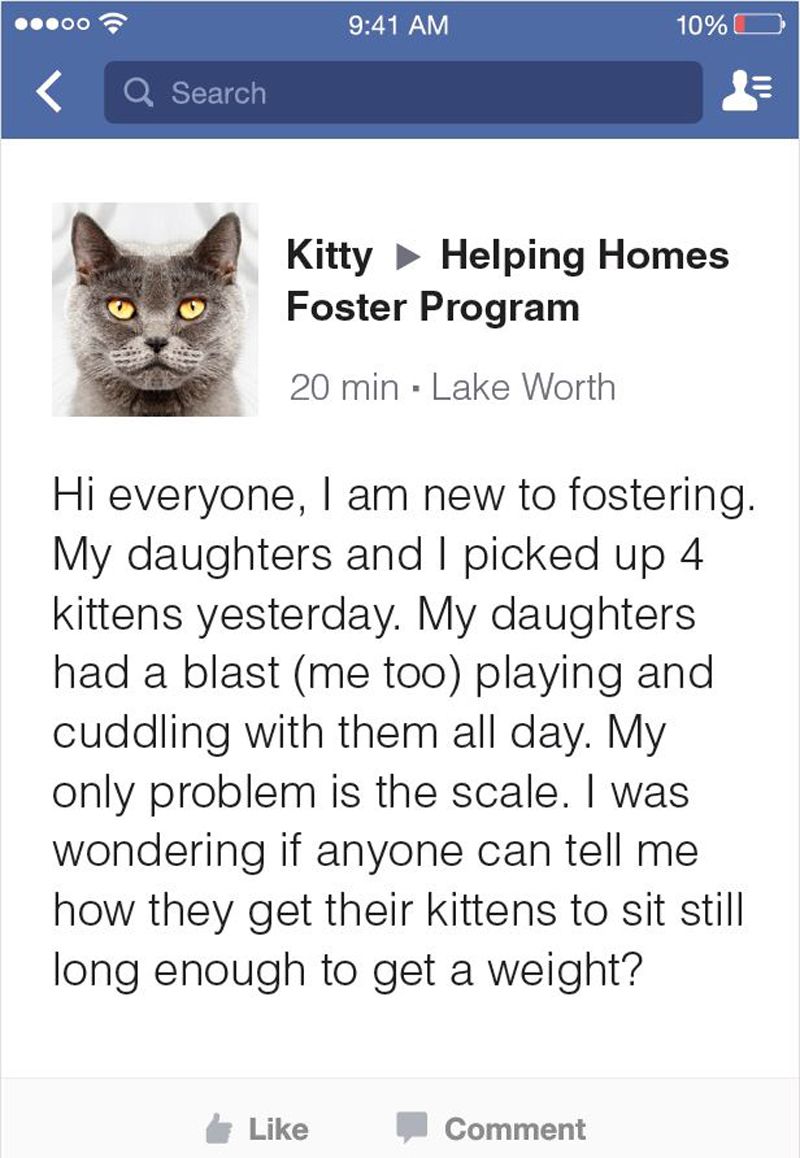
Connecting with content
While Facebook isn’t rocket science, a complex behind-the-scenes algorithm determines the reach of your public posts. This can “make it difficult, especially for smaller groups, to be successful,” says Feldman. On your main organization page, you want your content to reach as wide an audience as possible; to do that, you need to create content that fans like and share, and you need to respond to their comments and questions, Feldman says.
The two main reasons people don’t like a page, she says, are an overabundance of posts or posts that aren’t interesting. “You have to find that balance of newsworthy, important stuff but also cutesy, interesting stuff,” she says. Fortunately, Facebook’s page insights tool makes it easy for you to see what content resonates most with your audience.
By drafting a weekly posting schedule, Lab Rescue maintains a mix of adoption success stories, profiles of dogs needing homes, organization messages, Lab-related cartoons and endearing photographs and videos. This feel-good approach attracts many fans who have never been involved in rescue work, says Finn. “They started as Lab lovers, and then we weave them into our fabric.”
For private volunteer groups, while you’re not looking to grow your community through shares and likes, you still need content that serves the page’s purpose and engages its members. On the Pima Animal Care Center’s volunteer Facebook group, Hansen publishes a mix of practical information (such as calls for volunteers to fill shifts or changes to shelter policies) along with “fun events, webinars, trainings, etc., that volunteers might be interested in. I post pictures of volunteer activities, weekly volunteer spotlights, and stories about our volunteers or organization.”
Nicki Everett with the Seattle Area Feline Rescue in Washington has found that adoption stories resonate most with her volunteers. Every adoption is posted in the rescue’s volunteer group, along with a shout-out to the people who fostered the animals. “The fosters absolutely love it,” says Everett. “They really count on that and appreciate it.”
Once you’ve established a vibrant Facebook community, you may discover that your most popular content is user-generated. The stories, photos and videos that your adopters, volunteers and other supporters post will not only keep your Facebook presence “alive,” says Feldman, but also provide a regular stream of material that you can repurpose for your other social media channels, website and print pieces.
Facebook on a time budget
Hansen remembers how when she first proposed creating a Facebook group for volunteers, her boss was leery: “She said, ‘You know you’re going to have to keep an eye on this all the time.’” It’s a common concern: that without 24/7 monitoring, a Facebook forum will run amok and create problems. But as Hansen discovered, the group members themselves help police the space. Hansen only has to check the group page a few times a day, trusting that other members will tag her if a discussion warrants her intervention.
While a public group is likely to take more effort than a private group, you can save time by learning some basic Facebook features. For example, functions for sorting posts and comments will help “you avoid answering the same question every time,” says Feldman. If you’re worried that a controversial topic will blow up when you’re not online, you can change your page settings to automatically hide posts that contain certain words.
Disabling wall posts is another way some animal organizations reduce the time they invest in Facebook, although Feldman is ambivalent about this strategy. Ideally, you want to allow wall posts because it’s an opportunity to engage with more people, she says. But “if you know that you don’t have the capacity to go through the wall in addition to the comments, then disabling it makes sense.”
Finn’s advice for rescue organizations is to make Facebook a team effort. When Lab Rescue started on Facebook in 2008, she was the sole administrator. Today, those duties are shared among about a dozen volunteers. “Collectively, it’s a significant effort,” Finn says, but no one has to spend more than an hour or two a week managing the pages.
The payoff has been tremendous. Over the years, Lab Rescue has accumulated 450,000 followers of its main page and 13,000 members in its volunteer group. Its budget, volunteer corps and adoption numbers have nearly doubled. “Our circle has expanded and expanded. We have followers all across the country, despite our regional nature,” Finn says. “It helps us communicate with our volunteers, with our friends, plus it’s a lot of fun.”
Eight years ago, Finn says, she “didn’t appreciate what Facebook was” or how it would impact her organization. Now, she’s a bona fide fan.
“Social media,” she says, “was designed for rescue.”



